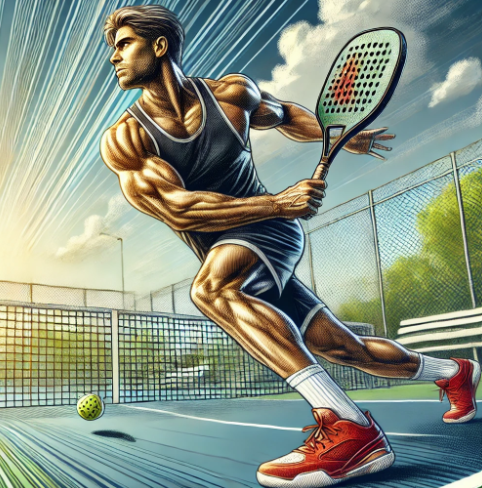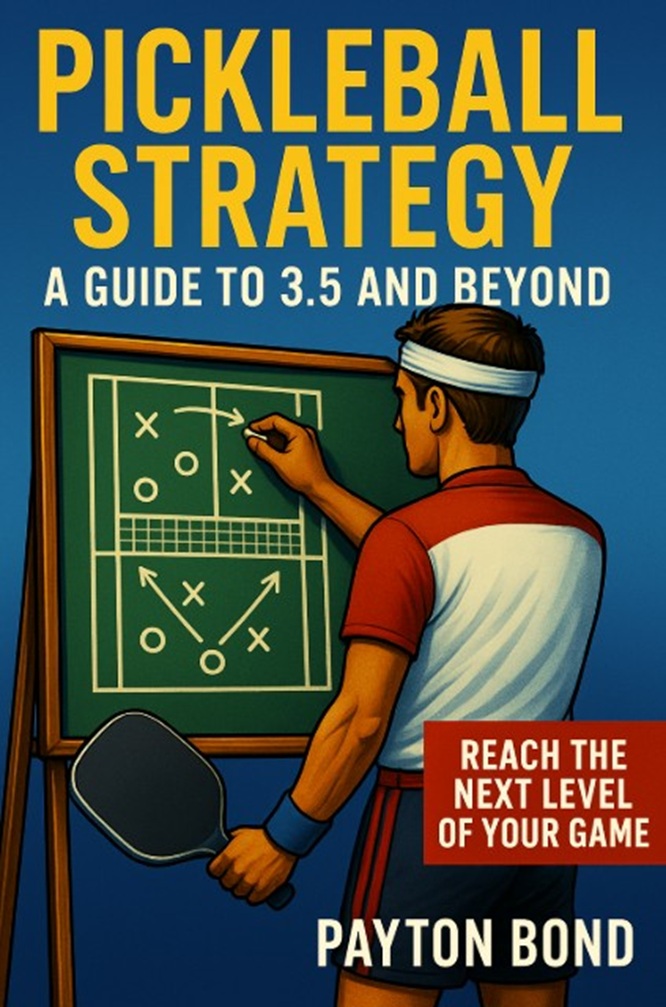
The Power Player Problem
As you advance in pickleball and start mastering third-shot drops, you’ll feel great about your growing skills, smart court positioning, and strategic gameplay. Then… you’ll meet a power player—or worse, a team of two.
These opponents won’t be impressed by your finesse. They’ll fire relentless drives and make the court feel like a war zone. But don’t worry—drop shots are your secret weapon to turning their strength into a weakness.
If you landed here from a search and feel this content lacks context, check out the foundational post on the Third Shot Drop:
Pickleball Third Shot Drop – Your Best Third Shot Option
What is a Power Player?
Power players, affectionately nicknamed “bangers,” tend to avoid the soft game altogether.
- To be clear, bangers don’t just hit drives well and on occasion, almost every shot they hit is a drive.
- They rely on raw power, hammering shots with speed and precision.
- Many come from tennis or other racquet sports, bringing strong forehand drives packed with heavy topspin.
- Instead of embracing pickleball’s strategic nuances, they aim to overwhelm with brute force.
Their style is fast, aggressive, and difficult to counter—especially if you’re still developing your defensive skills. But even the toughest bangers have an Achilles’ heel: the soft game they love to avoid.
Why Power Players are Tough to Beat
A power player’s relentless drives can put you on the defensive quickly. Their speed, precision, and court awareness give them the edge, especially if you lack a tennis or racquet sports background.
However, with consistent drop shots and solid net volleys and blocking, you can force them to slow down and engage in a style of play that’s out of their comfort zone. Even skilled bangers struggle when they’re forced to deal with soft, well-placed shots that neutralize their aggression.
How to Counter Power Players
Some would say you should play their game and try to match their drives with your own drives. This is one approach and if you are really good, maybe you can pull this off. Otherwise, you may be better playing to your strengths and forcing them into uncomfortable situations they don’t practice much.
Defense
- Strong Serves.
- These players often have powerful serves. Hopefully they will miss some because they are hitting so hard.
- Be ready and hit a lofted return as deep as you can.
- Many times, they hit a normal strength serve because they know how important it is to get it in, or they’ve been called out for hitting an illegal serve as they attempt very powerful topspin drive serves.
- If they hit a normal strength serve, hit your return with placement trying to get a backhand third shot.
- Be prepared for their drives.
- Punch or volley their third-shot drives to keep them from advancing.
- Volley shots back to their backhand. Putting it on their forehand just means another drive is coming back at you.
- Get out of the way.
- As you gain more experience against these players you will start to sense when their shots are going out long.
- If they take a very big backswing and the ball they are attacking is below net height, get ready to move aside or down. If the ball isn’t hit really well with a lot of topspin, it will likely fly out of bounds.
- You’ll see this if you hit a short return of serve that barely clears the net and is low. They will charge in, wind up and drive it out of bounds. Just get out of the way. This is one of the toughest things to master in pickleball. How many times have you blocked a shot and said, “That was going out.”. The ball is on you so fast you just react. The key comes with experience and seeing the signs of a hard shot coming at you from close range.
- Watch out for the Shake and Bake.
- Power players often follow their third shot drive by rushing the net, looking to finish the point. Counter this by blocking their drive to the side or down and away from their position.
- Practice your soft blocks.
- If they’re far back when they drive their third shot, use a soft block to drop the ball just over the net, if done well this can end the point as the ball softly bounces just beyond the net in the NVZ.
- A well-placed soft block just over the net can neutralize even the hardest drives. Advanced players master these skills to keep power players guessing and off balance.
Offense
- Serve Return.
- Hit your return with some loft to safely clear the net and hit the return as deep as you can. Of course, get to the net quickly.
- Their third shot drive hit from the deepest part of the court will slow down as it approaches the net.
- As mentioned, target the return to try to entice a backhand third shot.
- Drop Shots and Reset Shots
- Stay composed and focus on executing consistent drop shots and resets to work your way to the kitchen line. Good players will, of course, smash back poor drops shots. If they have to reach and volley your shot back, stay composed and hit another drop shot at them.
- Hit drop shots and resets to power player’s backhand, otherwise be ready for a powerful forehand response.
- If your drop shot lands just over the net and bounces low, move in. This is where you might entice a mistake as the power player may want to drive the ball even though it isn’t attackable, hope they drive it in the net or past you and out of bounds. Be ready to counterattack as there is a good chance they will fire it directly at you and up trying to force a mistake.
- If your drop shot clears the net and bounces high, be prepared for a hard drive response. Maybe move in a bit but watch to see what their intentions are.
- On a good drop shot, if the player acknowledges the good shot, they may hit a dink back to you. In this case you have neutralized their power and can fight it out at the net.
- Keep hitting drop shots… drop shots frustrate power players by forcing them into the slower game they’d rather avoid.
- Drive the Third Shot
- If you make a good serve and force a short return, as is the case with any opponent, drive your third shot at them to keep them back.
- It’s also important to realize that if the power player drives their return back the ball is moving very fast and will get to you quickly. If you are positioned well and can drive the third shot back at them this may work as they didn’t have enough time to advance. Their shot got to you quickly and your return got to them quickly. This will catch them off guard as they have to volley a shot while moving to the net.
- Patience Pays Off
- If you get them to dink your third shot back, this is what you want. Engage them in a dinking rally once you reach the kitchen. Be patient, their preference for fast-paced shots leaves them vulnerable in this controlled, strategic part of the game. Always dink to their backhand side. If not, they will speed up anything they can right at you with their forehand, even if is an unattackable ball. Be ready to counterattack if they come right at you.
Always Play Against Power Players
Some advanced players shy away from power players, feeling that their fast-paced style isn’t “real” pickleball or that points end too quickly. However, there’s no one right way to play pickleball—every player brings their own style, and learning to counter all of them makes you a better, more versatile player.
Take on power players as a challenge. Playing against them will test your patience, improve your defensive skills, and teach you to adapt under pressure. Avoiding them not only limits your growth but also misses the opportunity to appreciate the variety that makes pickleball so dynamic and engaging.
Instead of avoiding bangers, embrace the chance to play them. When you figure out how to frustrate their strategy and pull them into your game, the satisfaction of overcoming their brute force will make every victory that much sweeter.
Summary
Facing power players can feel overwhelming at first, but with time and practice, you’ll develop the skills to beat them. Perfected drop shots and controlled volleys and blocks will leave even younger, stronger opponents scratching their heads.
As you frustrate their strategy, mistakes will pile up. You’ll find openings to capitalize on, and before long, the game will swing in your favor.
By the end of the match, you’ll be smiling at your hard-earned victory. Meanwhile, your opponents might leave with a bruised ego and a newfound respect for the soft game they once dismissed. In the end, you haven’t just won—you’ve given them a valuable lesson in the beauty of balanced pickleball.
Check out Payton Bonds new eBook!
Pickleball Strategy – A Guide to 3.5 and Beyond
See it on Amazon.

👤 Follow Payton Bond
All Star and Top Contributor on multiple Facebook Pickleball Forums.
Contributor at TheKitchenPickle.com.
Visit Payton Bonds Facebook Page

